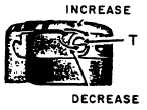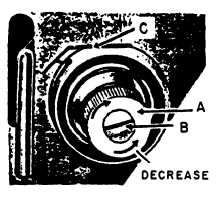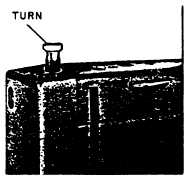you with your right hand until the needle moves
down and up again to its highest position.
3. Pull the needle thread gently and the
bobbin thread will come up with it through the
hole in the needle plate.
4. Place both ends of the thread beneath and
in back of the presser foot.
5. With the needle at its highest point, place
the material to be sewn beneath the presser foot
and fully lower the presser foot lifter lever.
6. Start sewing.
Regulating the Tension
Tension is the key word to good sewing. For
perfect stitching, the tension of the upper and
lower threads should be balanced and just
sufficiently tight to lock both threads in the center
of the material (look again at figure 9-16).
The machine is correctly adjusted to make a
perfect stitch before leaving the factory. When
adjustments do become necessary, the problem
is more likely to be caused by the upper thread
tension, so always begin there. To adjust the
upper thread tension, proceed as follows:
1. Lower the presser foot. Remember upper
thread tension adjustments must be made with the
presser foot down.
2. Check the upper thread tension. If it is
loose, turn the tension nut (A in fig. 9-43)
239.452
Figure 9-43.—Upper thread tension.
clockwise to increase the tension; if the upper
thread tension is tight, turn the tension nut
counterclockwise to loosen it.
Adjusting the Bobbin Thread Tension
When you find it necessary to adjust the
bobbin thread tension, turn the tension screw
(T of fig. 9-44) on the bobbin case clockwise to
increase the tension, and turn the screw
counterclockwise to decrease the tension.
Regulating the Pressure
of the Presser Foot
The pressure of the presser foot should be
adjusted according to the type of material being
sewn. The heavier the material, the heavier the
pressure. The lighter the material, the lighter the
pressure. The pressure should be only heavy
enough to prevent the material from rising with
the needle and to enable the feeder mechanism
to move the work along evenly. The pressure
becomes tighter as the regulating thumbscrew is
turned clockwise, and looser as the thumbscrew
is turned counterclockwise (fig. 9-45).
239.453
Figure 9-44.—Bobbin thread tension.
239.454
Figure 9-45.—Adjusting the presser foot pressure.
9-35





